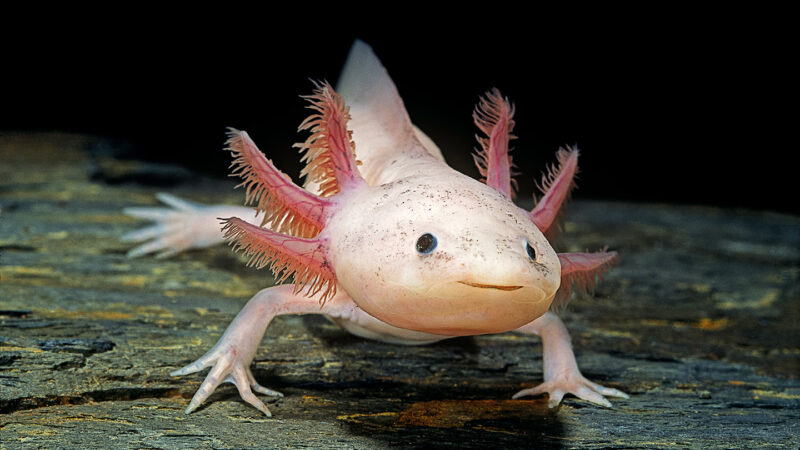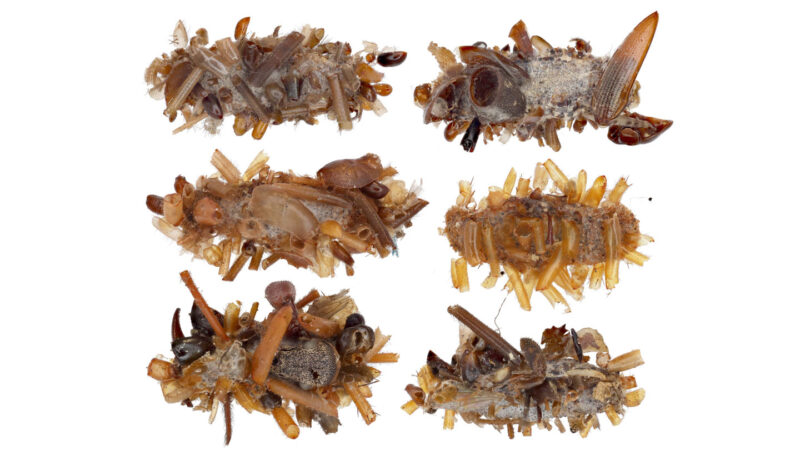Columbus, Ohio — Today’s menu special: giant water bugs (Lethocerus indicus). Some may balk at eating insects. But these meaty big boys — one of the biggest members of the family of true bugs — add a prized aroma to food, notes Kasidet Srisuk, 16. He likens its scent to “green apple mixed with banana.” Unfortunately, populations of these insects are falling. That’s why he and two classmates launched a crusade to save these not-so-creepy crawlies.
In Thailand, “we make Nam Prik Mang Da,” explains Thunvarat Jaturon, 17. Giant water bugs are the key ingredient in this chili paste. Indeed, they’re “very special in Thailand,” she says. But not just here. From India through Southeast Asia, many people enjoy snacking on this prized, if pricey, protein-rich street food or dining on curries and sauces flavored with mashed water bugs.

The insects can reach 5 to 8 centimeters (2 to 3 inches) long. In the wild, they dine on tadpoles, small fish and large insects. There used to be lots of giant water bugs to harvest, Thunvarat says. But that’s no longer true.
Pesticides running off the land have been killing giant water bugs. Habitat loss and climate change have hurt them, too, she notes, by reducing their prey.
Insect farmers have stepped in, trying to raise these bugs. However, that hasn’t proven easy.
But she, Kasidet and Pruttachart Khongsawat,16, may have found a way to sustainably rear these mini livestock. All three high-school students attend Demonstration School of Khon Kaen University in Muang Khonkaen, Thailand. For a science fair project, they developed a new recipe for bug feed. It greatly boosts the bugs’ growth.
And thanks to artificial intelligence (AI), the team overcame another big challenge: visually identifying males (the tastier and more valued bugs) from females. That will allow farmers to save those females as brood stock for raising more offspring.
Winner, winner, fish gut dinner
The trio of Thai teens tackled two problems faced by water bug farmers. “We tried to solve them one by one,” says Thunvarat. The first issue: the insects’ picky diet.
Some people envision bugs as dirty scavengers. In fact, these predatory bugs like fresh prey, such as tiny shrimp or tadpoles. They get squeamish about dining on something that’s already dead. But rearing big populations of fresh prey would complicate the bug-farming process and up its cost.
“Live prey has a special [scent],” Kasidet says, which hungry giant bugs seek out. The teens found a workaround. They cooked up a new recipe, Kasidet notes, with “a similar smell to the live prey.” The winning formula: fish guts and gelatin.
The protein-rich first ingredient is a byproduct of the fishing industry that would normally be thrown away. The students blended it with a gelatin that could be molded to look like baby catfish.
The carnivorous bugs happily chow down on the new food. Even better, this diet improves their survival rate by 60 percent compared to bugs fed a natural diet.
Overcoming an identity crisis
Giant water bug farming works best with equal numbers of males and females. But diners are willing to pay substantially more for the fruit-scented males. So it helps if a farmer can track the share of male and female bugs.
That’s proven tricky because at first glance, they all look pretty much alike, notes Pruttachart. But three clues helped the teens overcome bug-sex confusion.
Do you have a science question? We can help!
Submit your question here, and we might answer it an upcoming issue of Science News Explores
“The female is a lot bigger,” Pruttachart notes. That’s the first clue. Females also have distinctive markings on their abdomens. “It looks like the letter U,” he says. Finally, the ladies are a bit darker than the guys.
Using water bug photos, the students trained an AI program on these clues. In no time, it could count male and female bugs quickly. That’s key, as insect farming involves a lot of bugs.
No one else is doing this type of sex determination of the bugs, says Pruttachart. His team created the first AI app to do this, he says.
Giant water bugs undergo five developmental stages as they grow. The AI can determine sex by their fourth stage, when they’re about a month old. It’s not foolproof. But so far, it’s about 80 percent accurate, Pruttachart says.
Another benefit to that quick ID of a bug’s sex: figuring out which ones to send to market. Being fruit-scented, the males sell for twice as much as females, says Thunvarat. That scent explains why many chefs prize males in their cooking.
These innovations could lead to sustainable water bug farming, the teens say. The nutritious, high-protein food also offers to help preserve an Asian cultural heritage of water bug dining. Without help, this culinary tradition might be lost.
For their work, the trio became $1,200 award winners in animal science here in May as part of the 75th annual Regeneron International Science & Engineering Fair, or ISEF. Society for Science (which also publishes this magazine) created ISEF and still runs it. This year’s 1,657 finalists came from 62 nations or territories. Together, they took home nearly $9 million in prizes.

















